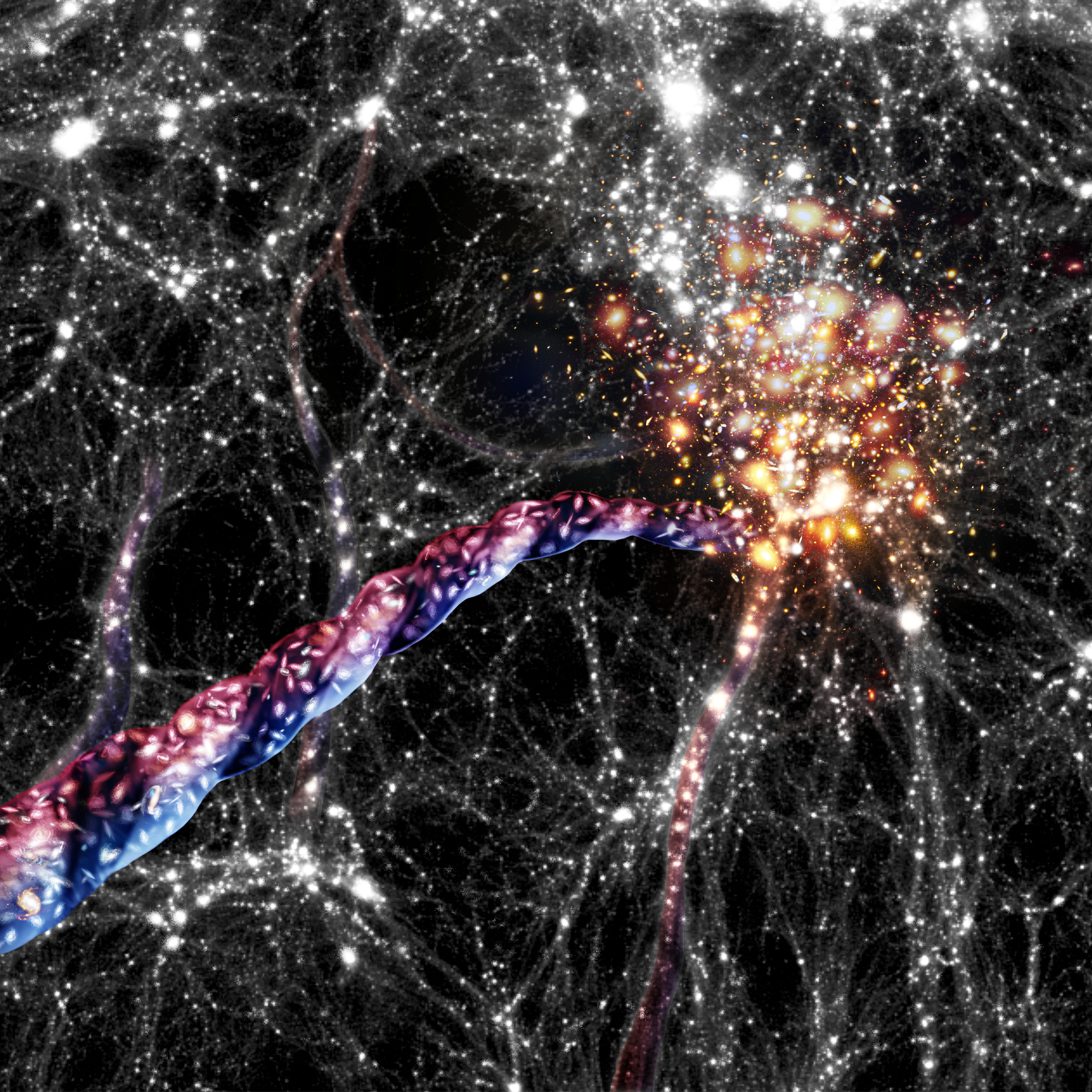
One of the more fascinating parts of astronomy is that the Universe continuously surprises us with what I would have thought is impossible. But part of exploration, to ruin the language of Lewis Carroll’s Red Queen, is believing as many as six impossible things before breakfast.
Yesterday, I found an amazing article in Nature Astronomy that discusses the surreal discovery that even the largest filaments of galaxies may be spinning ever so slowly as they trace the fabric of the Universe.
After the Universe formed, there were the slightest of irregularities in the distribution of matter. These tiny irregularities collapsed into galaxies and the stars they contained, and gravity has pulled these galaxies into vast structures that resemble walls, filaments, and clusters. The Sloan Digital Sky Survey captured data on thousands of these filaments, and Peng Wang and his team realized that by looking separately at the galaxies to either side of the filament’s center and averaging their motions, they could see if there was any systematic rotation, and they found it. This rotation was easiest to discern in denser filaments and in colder filaments. These are the largest objects ever seen to have rotation, and they show that there is a dance to the motions of everything in the sky across the largest of structures, and it is magnificent.
More Information
AIP press release
“Possible observational evidence for cosmic filament spin,” Peng Wang et al., 2021 June 14, Nature Astronomy




 Join the Crew!
Join the Crew!
 Escape Velocity Space News
Escape Velocity Space News
0 Comments